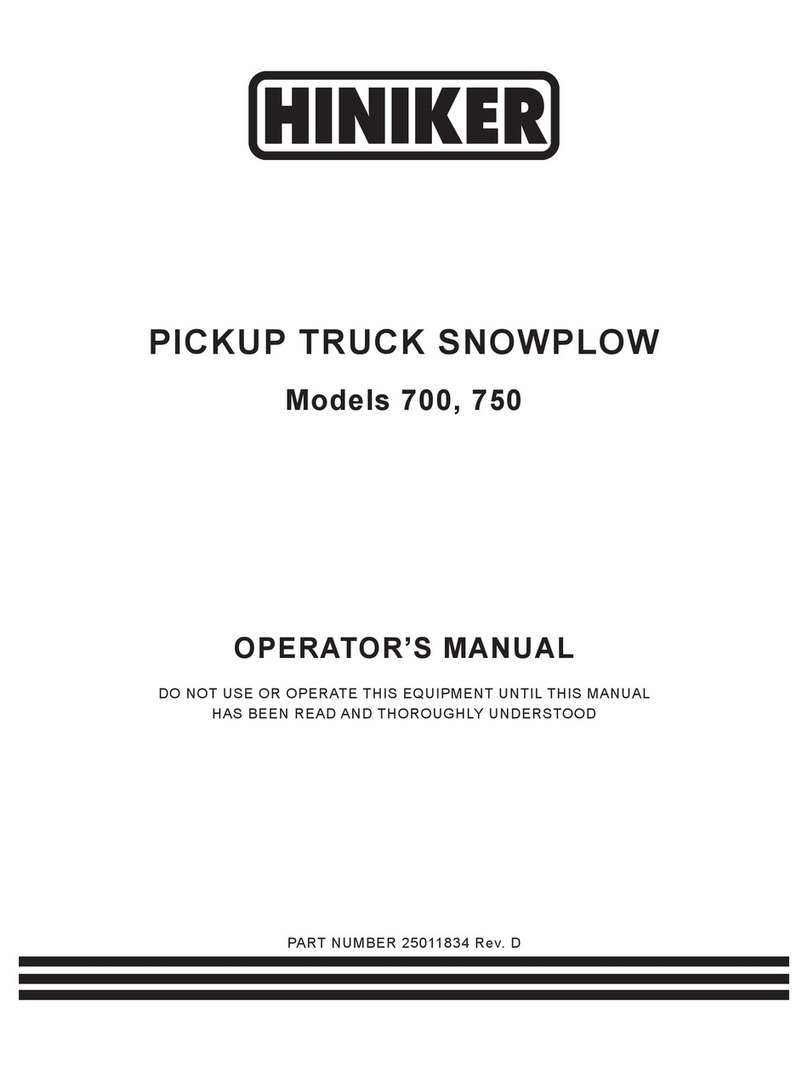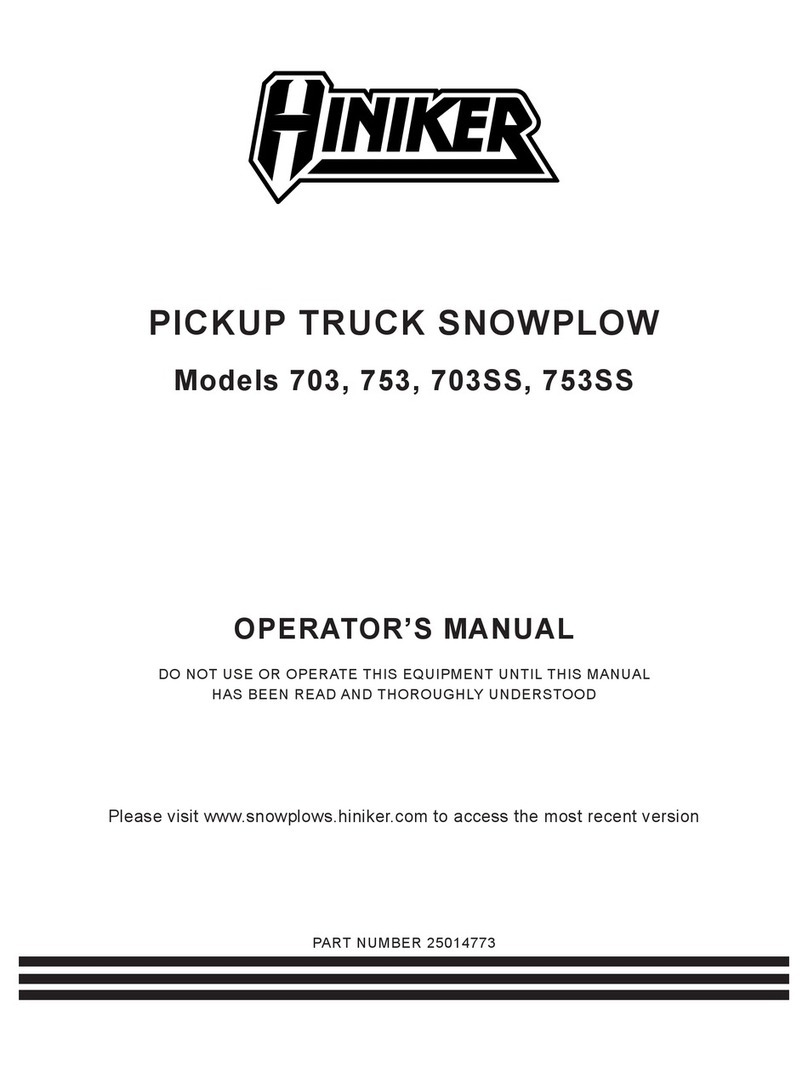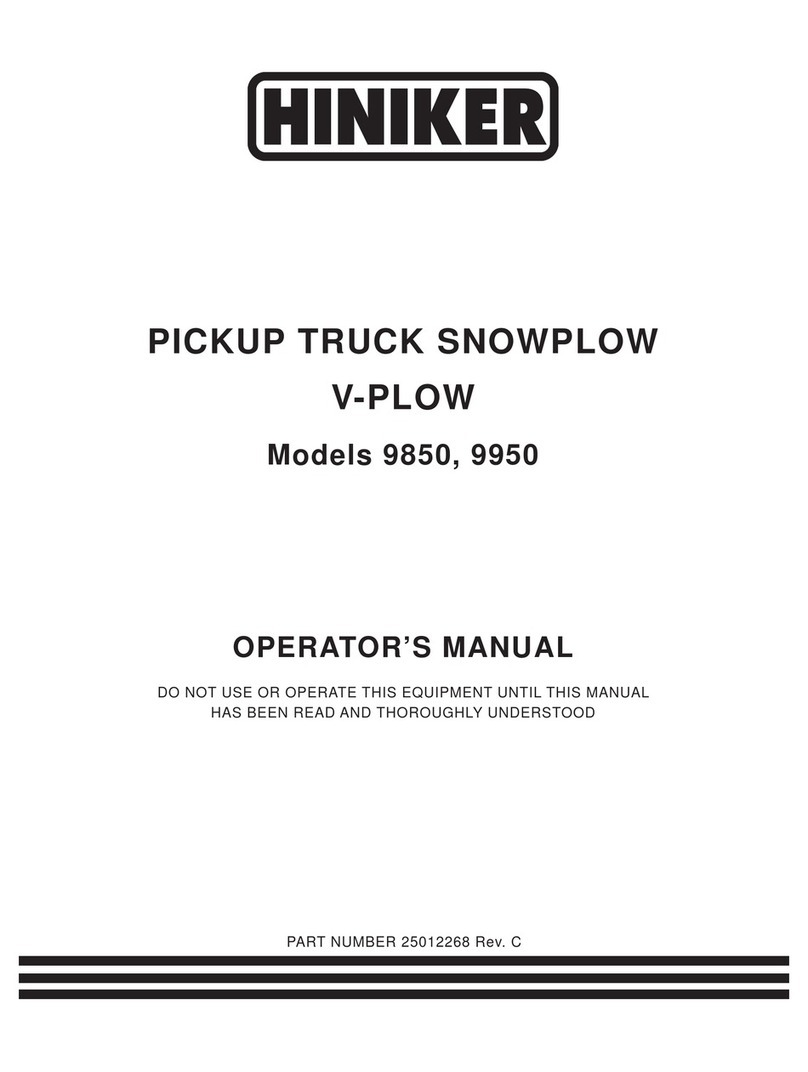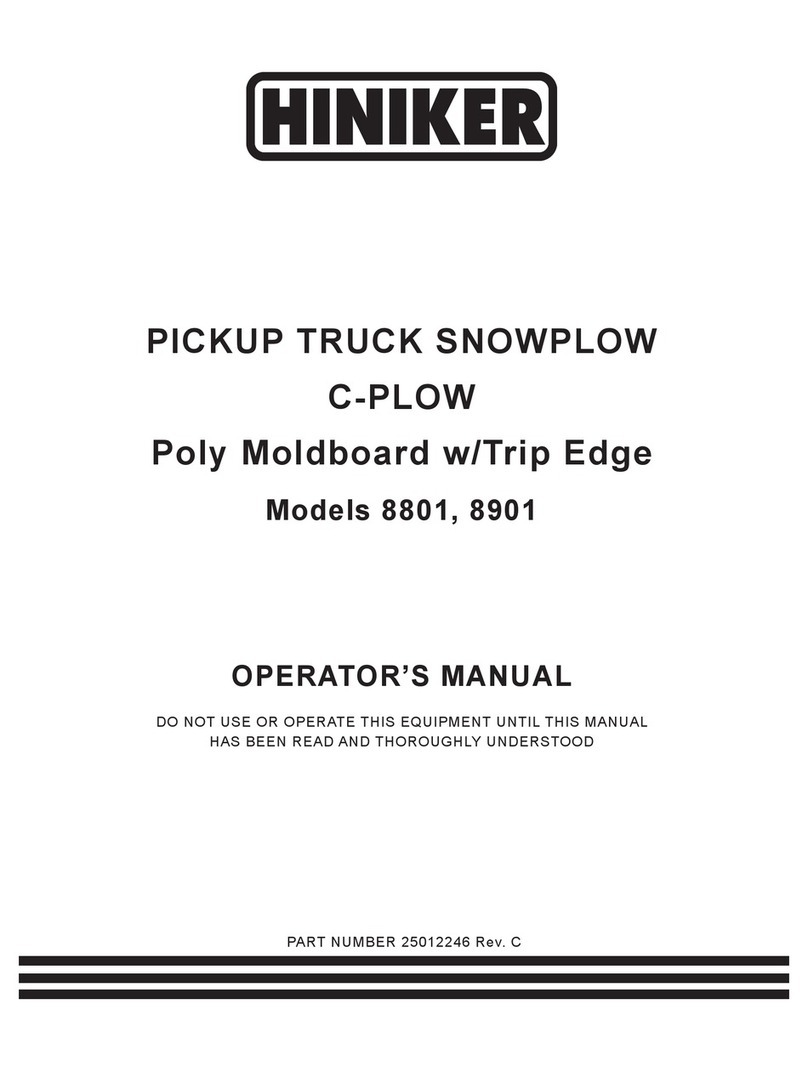
This is a safety alert symbol. It alerts
an operator to information concern-
ing personal safety. Always observe
and heed these symbols and instructions,
otherwise death or serious injury can result.
Operator safety is a principle concern in equip-
ment design and distribution. However, many
accidents occur because a few seconds of
thought, and a more careful approach to han-
dling, were ignored. Accidents can be avoided
by knowing and following the precautions cited
in this manual.
GENERAL SAFETY
1. Read this manual thoroughly. Make sure
the operator understands it and knows
how to operate this equipment safely. This
equipment can kill or injure an untrained or
careless operator and bystanders. If you
sell this equipment, ensure the new owner
acknowledges receipt of this manual.
2. This plow is intended for plowing snow
only. Plowing gravel, rocks, etc., or using
the plow for any purpose other than plowing
snow could result in harm to the operator or
bystanders or cause damage to the plow or
vehicle, and will void the warranty.
3. Do not service or otherwise handle a plow
in the raised position unless it is securely
blocked against unexpected falling. Like-
wise, when servicing a plow with the wings
extended, block wings to prevent unexpect-
ed wing movement due to accidental loss of
hydraulic pressure or cylinder removal.
4. Do not attempt to handle or service this
equipment, or direct others to do the same,
unless you know how to do it safely and
have the proper tools for the job.
5. Keep hands, feet, hair, and clothing away
from moving parts.
6. Do not alter the equipment to the extent of
compromising safety or performance.
SAFETY
BEFORE OPERATION
1. Discipline yourself to visually check for
worn, damaged or cracked parts before
starting use. Replace these with genuine
Hiniker parts.
2. Escaping hydraulic oil under pressure can
penetrate the skin, causing serious injury.
Do not use your hand to check for leaks.
Use a piece of paper or cardboard to find
suspected leaks.
Tighten all connections before pressurizing
hydraulic lines.
If fluid is injected into the skin, get medical
attention immediately to prevent serious in-
fection.
3. Check all controls and operating functions
of the machine in a safe area before start-
ing to work.
DURING OPERATION
1. Always wear seat belts when operating a
motor vehicle.
2. Ensure everyone is clear of the machine,
especially away from blind areas of the op-
erator, before starting, actuating hydraulics
or operating this equipment.
3. Do not plow snow at excessively high
speeds.
4. Avoid hitting objects that will damage your
plow or truck.
5. Set the brakes and stop the truck’s engine
before adjusting or servicing your plow.
AFTER OPERATION
1. Park the plow on a solid, level surface. Fully
collapse the lift cylinder with the upper lift
links before unhitching the plow to prevent
the plow frame from falling forward.
Safety 3































